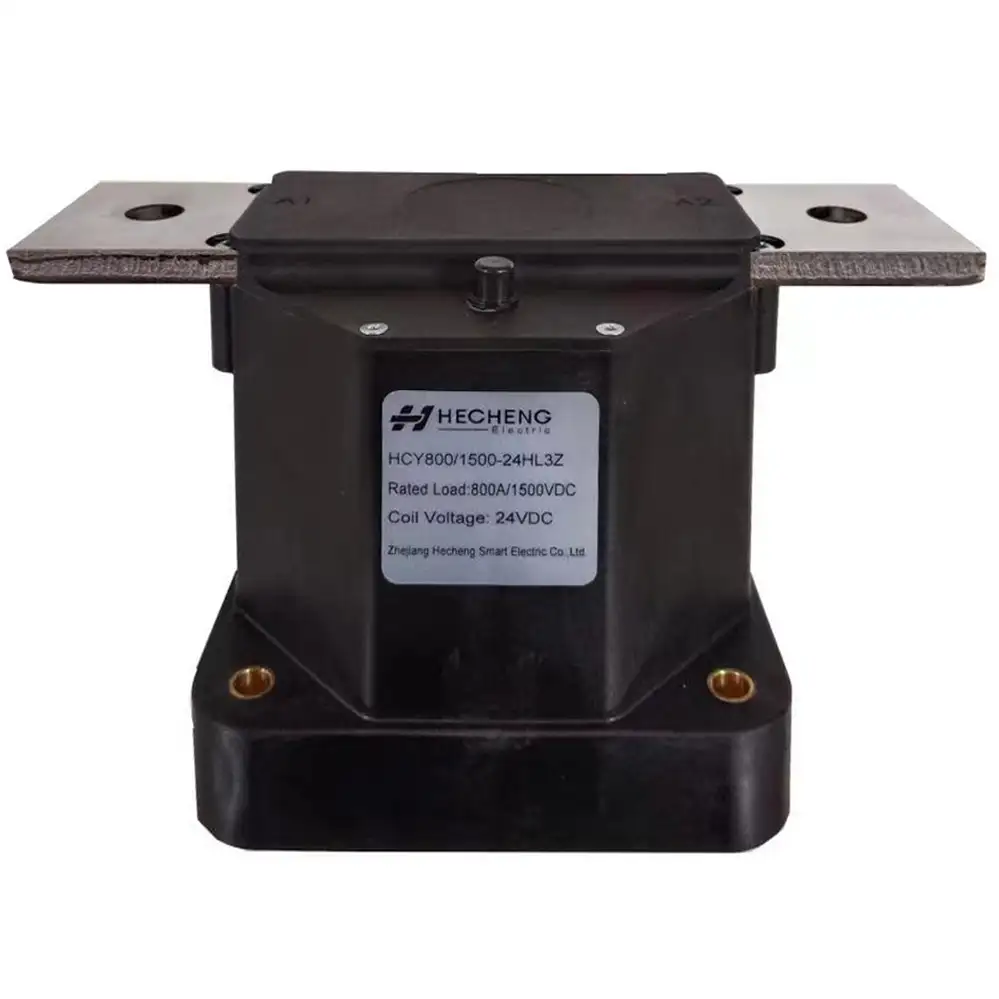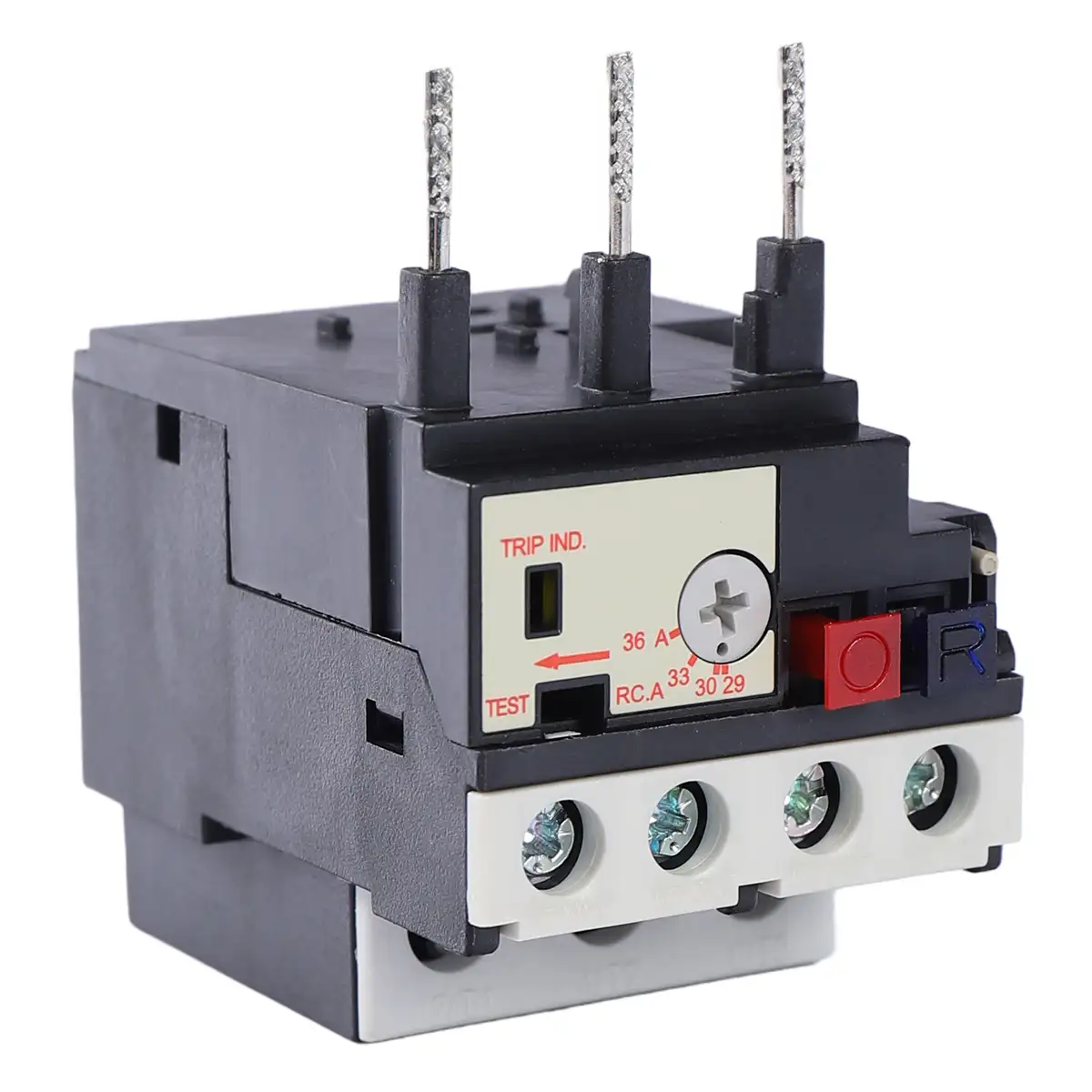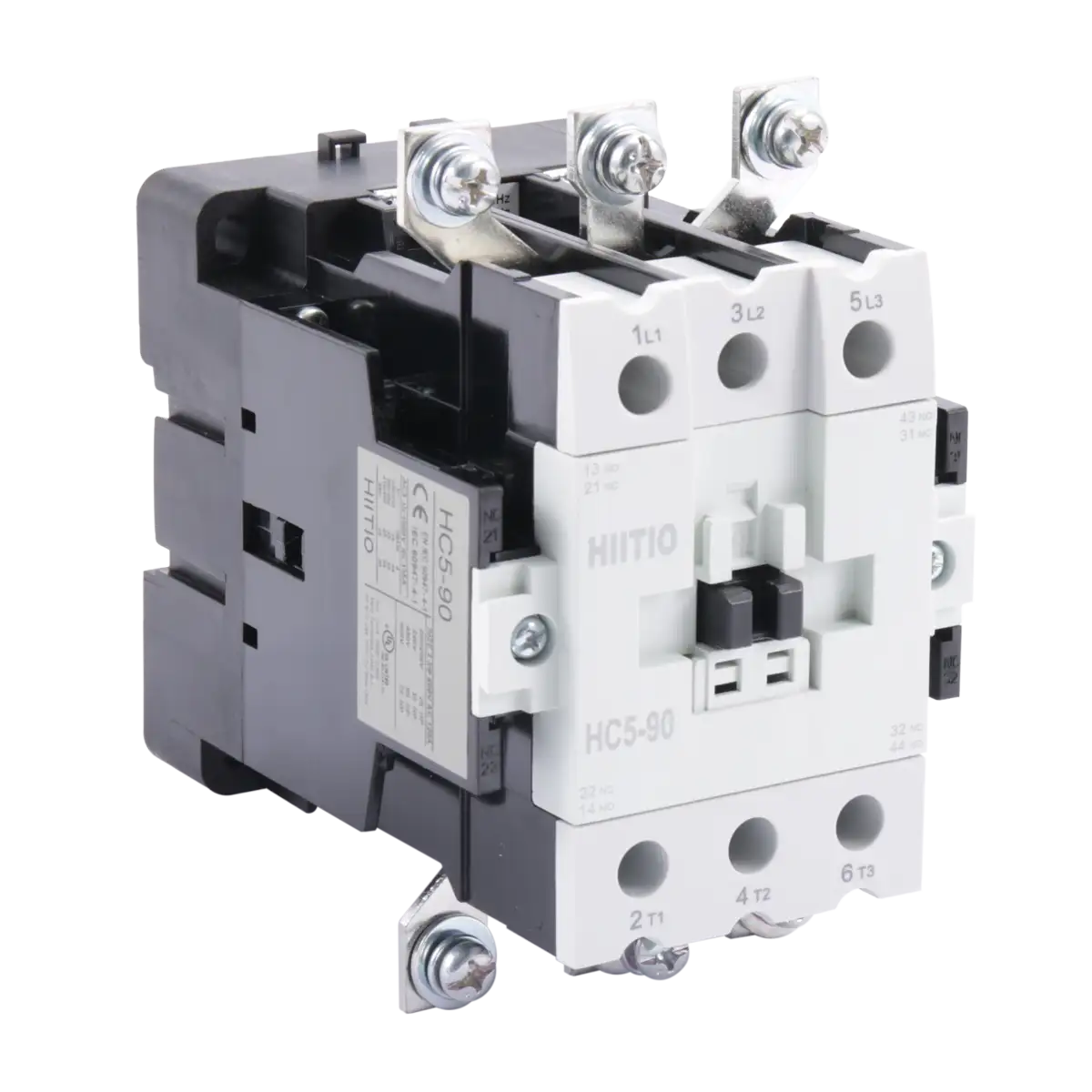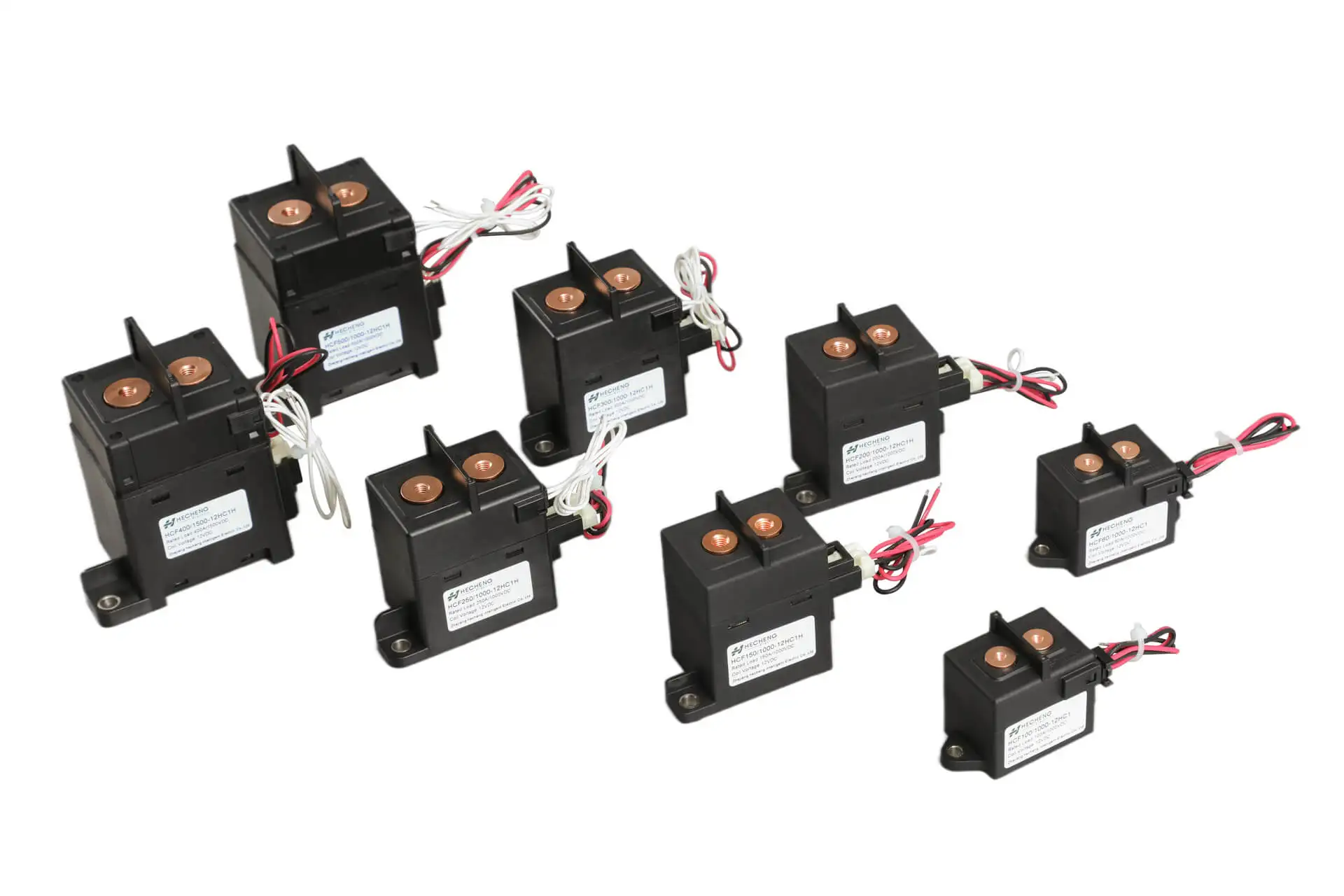In recent years, along with the rapid development of scientific and technological growth, automation equipment has gradually been widely used in various industries. In the process of electrical engineering construction and development, the automation of low-voltage electrical appliances is one of the main applications of automation technology in electrical engineering.
Among the majority of automation low-voltage electrical appliances, relays are indispensable components. Through the application of relays, the smooth operation of automated low-voltage electrical appliances can be effectively ensured, thereby promoting the development of electrical engineering. Therefore, analyzing and understanding the types of relays can help us better utilize automation electrical technology.
Classification by Purpose:
Control Relay:
Used to control circuit on-off or switching.

A control relay is an electrical switching device used to control circuit on-off or switching. It usually consists of an electromagnetic component and switch contacts.
When the electromagnetic coil of the control relay is energized, the generated magnetic field attracts or repels the switch contacts, thereby enabling other devices or loads in the control circuit to be turned on or off, achieving control functions for the circuit.
Specifically, when the electromagnetic coil of the control relay is energized, the generated magnetic field causes the contacts to move, thus achieving circuit on-off or switching. This action can either close the contacts (as in normally open relays) or open them (as in normally closed relays), depending on the specific application requirements to control the load or device in the circuit.
Control relays are widely used in various fields such as automation systems, industrial equipment, power systems, and household appliances. For example, in industrial automation, control relays can be used to control machine start/stop, direction switching, speed regulation, and other functions; in household appliances, control relays can be used to control the on/off of lights, fans, induction cookers, and other devices.
In summary, control relays achieve circuit control through electromagnetic principles and possess features such as simple structure, high reliability, and flexible usage, making them one of the most commonly used important devices in the field of electrical control.
Protection Relay:
Used to monitor the circuit status. Once abnormal conditions such as overload or short circuits are detected, it triggers protective actions to safeguard equipment and circuits.

Protection relays are important devices in electrical systems used to monitor the status of circuits and take protective measures when abnormalities are detected to prevent equipment damage or circuit faults. Their functions include:
- Monitoring circuit status: Protection relays monitor parameters such as current, voltage, and frequency in circuits to ensure normal operation.
- Abnormality detection: Once abnormalities such as overload, short circuit, or ground faults occur in the circuit, protection relays detect them and respond accordingly.
- Protective action: When abnormalities are detected, protection relays initiate protective actions such as cutting off power, disconnecting faulty circuits, or issuing alarms to protect circuits and equipment.
Types of protection relays include:
- Overload protection relays: Monitor current in the circuit, considering it as overload if it exceeds the rated value.
- Short circuit protection relays: Monitor current in the circuit, considering it as a short circuit if it reaches or exceeds the set threshold.
- Ground fault protection relays: Monitor the grounding situation in the circuit and take protective measures when a ground fault is detected.
- Overvoltage and undervoltage protection relays: Monitor voltage in the circuit, taking protective measures if it exceeds or falls below the set threshold.
- Overfrequency and underfrequency protection relays: Monitor frequency in the circuit, taking protective measures if it exceeds or falls below the set frequency range.
The working principle involves:
- Obtaining circuit parameter information through sensors such as current transformers and voltage transformers.
- Inputting parameter information into comparators or control units in protection relays.
- Comparing parameters with preset thresholds.
- Triggering protective actions when parameters exceed or reach preset thresholds.
Applications of protection relays include power systems (generators, transformers, distribution systems), industrial systems (motors, control systems), and building systems (elevators, air conditioning systems).
Advantages of protection relays include improving circuit safety and reliability, preventing equipment damage and circuit faults, and ensuring real-time monitoring and quick response to abnormal situations to protect equipment and personnel safety.
In summary, protection relays play a crucial role in electrical systems by monitoring circuit status and taking protective measures when abnormalities occur, ensuring the safe operation of circuits and equipment.
Time Relay:
Has a time delay function, and triggers action after a set time delay.
A time relay is an electrical device equipped with time delay functionality, which executes specific actions after a preset delay time.
Functions:
- Time delay functionality: Time relays can delay executing specific actions for a set period, such as circuit connection or disconnection.
- Time setting: Users can set the delay time as needed, typically in seconds, minutes, or hours.
- Action control: Time relays can control various electrical equipment actions, such as switching, circuit connection or disconnection, starting or stopping motors, etc.
Types:
- ON-delay relay: Starts timing after the trigger signal is disconnected, executing actions after the set delay time.
- OFF-delay relay: Starts timing after the trigger signal is connected, executing actions after the set delay time.
- Reset relay: Starts timing after the trigger signal disappears, executing actions after the set delay time.
Working principle:
- Time relays typically consist of a timer, relay, and control circuit.
- When the input signal triggers, the timer starts counting.
- After reaching the set delay time, the control circuit activates the relay to perform the corresponding action.
- After the action is completed, the relay returns to its initial state, waiting for the next trigger signal.
Applications:
- Start control: Used to delay starting motors or other equipment to avoid damage caused by fluctuations in grid voltage.
- Protection control: Delays circuit disconnection when system faults occur, allowing the system to recover or undergo necessary repairs.
- Safety control: Used to activate safety devices or alarm systems, allowing personnel to evacuate from hazardous areas.
Advantages:
- Provides flexible time delay control suitable for various application scenarios.
- Increases the reliability and safety of electrical systems.
- Can reduce the impact on equipment, extending its lifespan.
Time relays are widely used in industrial control and automation fields, providing precise time control and essential functionality and protection for various electrical systems.
Thermal Relay:
Controls circuits through thermal response.
A thermal relay is an electrical device that controls circuits through thermal response. It utilizes the heat generated by the current passing through the relay to control its operation.
Working principle:
- Thermal relays typically include a thermal-sensitive component such as a thermal resistor or a thermal diode.
- When current passes through the relay, the thermal-sensitive component heats up, causing a rise in temperature.
- When the temperature of the thermal-sensitive component reaches a certain threshold, it triggers the release of heat inside the relay, resulting in relay operation.
- The operation of the relay can be to connect the circuit, disconnect the circuit, or perform other control actions, depending on the design and application scenario of the thermal relay.
Features:
- Overload protection: Thermal relays are commonly used for overload protection. When the current exceeds the rated value, the release of heat inside the relay triggers its operation, disconnecting the circuit to protect equipment and circuits.
- Temperature control: Thermal relays can also be used for temperature control. When the ambient temperature exceeds a set threshold, the relay’s operation performs corresponding control actions such as starting or stopping fans or heaters to maintain the equipment within a safe temperature range.
- Thermal protection: In some cases, thermal relays can also be used to prevent safety hazards caused by equipment overheating, such as motor overheating protection.
Applications:
- Motor protection: Used for overload protection of motors to prevent damage due to overload.
- Air conditioning systems: Used for compressor protection in air conditioning systems to prevent compressor damage due to overload or overheating.
- Heating equipment: Used for temperature control of heating equipment to ensure safe operation within a specified temperature range.
- Lighting systems: Used for overload protection of lamps to prevent lamp damage due to overload.
Advantages:
- Simple and reliable: The working principle of thermal relays is simple and reliable, unaffected by external environmental conditions.
- Fast response: Due to control through thermal response, thermal relays typically have a fast response speed.
- Versatility: Thermal relays can be applied to various circuits and devices, with a wide range of applications.
In conclusion, thermal relays control circuits through thermal response, providing functions such as overload protection and temperature control. They are commonly used and effective protective devices for various electrical equipment and systems.
Classification by Structure:
Mechanical Relay:
Operates mechanical contacts through electromagnetic force to achieve circuit switching.

A mechanical relay is an electrical device that controls the circuit on-off by utilizing electromagnetic force to move mechanical contacts. It utilizes the magnetic field generated by the current passing through the relay coil to attract or release mechanical components, thus controlling the open and closed state of the contacts.
Structure:
A mechanical relay typically consists of components such as a coil, an iron core, contacts, and springs.
- Coil: Generates an electromagnetic field when energized, producing sufficient force to move the iron core and contacts.
- Iron core: Moves under the influence of electromagnetic force, thereby changing the state of the contacts.
- Contacts: Connected to the iron core, they make or break the circuit when mechanical movement occurs.
Working Principle:
- When current flows through the relay coil, it generates a magnetic field, causing the iron core to be attracted.
- The movement of the iron core activates mechanical components, resulting in the closure or opening of the contacts.
- The change in the state of the contacts controls the circuit on-off, achieving the corresponding function.
Types:
- Single Pole Single Throw (SPST) Relay: Has only one set of contacts, capable of controlling one circuit’s on-off.
- Single Pole Double Throw (SPDT) Relay: Has one set of contacts but can control two different circuits, enabling on-off switching.
- Double Pole Double Throw (DPDT) Relay: Has two sets of contacts, capable of controlling two different circuits for more complex on-off control.
Applications:
- Automatic Control Systems: Used for logic control and signal transmission in automation systems.
- Power Systems: Employed for protection, control, and regulation of power systems.
- Industrial Equipment: Utilized for electrical control and switching operations in various industrial equipment.
- Household Appliances: Used for control functions in household appliances such as air conditioners and washing machines.
Advantages:
- High Reliability: Mechanical relays have high reliability, suitable for various environments and working conditions.
- Cost-Effectiveness: Mechanical relays typically have lower costs compared to other types of relays.
- Versatility: Mechanical relays are applicable to various circuits and application scenarios, displaying strong versatility.
In summary, mechanical relays control the circuit on-off by driving the movement of mechanical components through electromagnetic force, thus controlling the contacts’ opening and closing. They find extensive applications in automation systems, power systems, industrial equipment, and household appliances.
Solid State Relay:
Utilizes semiconductor devices (such as thyristors, MOSFETs, etc.) for control, without mechanical moving parts, featuring fast response and long life span.
A solid-state relay (SSR) is an electrical device that utilizes semiconductor components such as thyristors or field-effect transistors for control. It lacks mechanical moving parts and achieves circuit on-off control through the conduction or blocking of semiconductor devices.
Working Principle:
The core component of a solid-state relay is typically a semiconductor device, commonly a thyristor or a field-effect transistor.
When a control signal is applied to the control terminal of the SSR, the semiconductor device is activated, causing a change in the circuit’s on-off state.
When the activation signal is applied to the control terminal, the semiconductor device conducts, closing the circuit; when the activation signal stops, the semiconductor device blocks, opening the circuit.
Advantages:
- Fast Response: Solid-state relays, devoid of mechanical moving parts, exhibit very rapid response times, typically completing actions within microseconds or milliseconds.
- Long Lifespan: Due to the absence of mechanical motion, solid-state relays generally have a longer lifespan compared to mechanical relays, capable of performing more switching operations.
- No Noise: As there are no mechanical movements, solid-state relays operate without generating noise, making them suitable for applications sensitive to noise.
- No Contact Wear: Solid-state relays have no contacts, thus avoiding contact wear-related poor connections or failures, resulting in better stability and reliability.
Applications:
- Automation Systems: Used in factory automation, machine control, etc., to achieve rapid and precise control of equipment.
- Power Systems: Employed in power systems for protection, regulation, and control, such as for switching circuits or controlling motors.
- Medical Equipment: Due to their noiselessness and long lifespan, solid-state relays are suitable for medical equipment applications requiring low noise and high stability.
- Household Appliances: Utilized in control functions of household appliances like ovens, microwave ovens, water heaters, etc.
Types:
- Single-channel Solid-State Relay: Has only one control channel, suitable for controlling a single circuit.
- Multi-channel Solid-State Relay: Equipped with multiple control channels, capable of simultaneously controlling multiple circuits or devices.
In conclusion, solid-state relays achieve rapid and reliable control of circuits through semiconductor devices, offering advantages such as fast response, long lifespan, and noiselessness. They find applications in various fields such as automation systems, power systems, and household appliances.
Bottom Line
In summary, the classification of industrial relays provides a comprehensive understanding of their types and functions. Control, protection, time, thermal, and mechanical relays play crucial roles in achieving precise circuit control, safeguarding equipment, providing time delay functionality, and ensuring reliable operation in various electrical systems.
Optimize your electrical systems and improve automation efficiency with our industrial relay solutions. Whether you need control, protection, time, thermal, or mechanical relays, we have you covered. Contact us now to discuss your specific needs and enhance your electrical systems for success.




